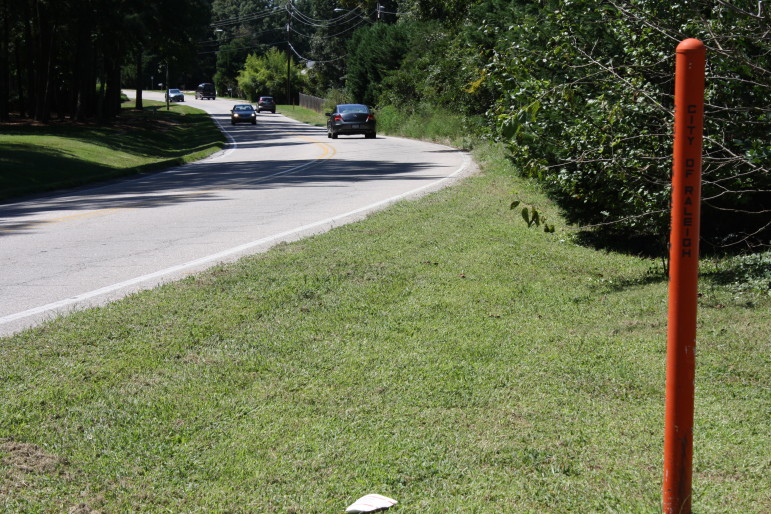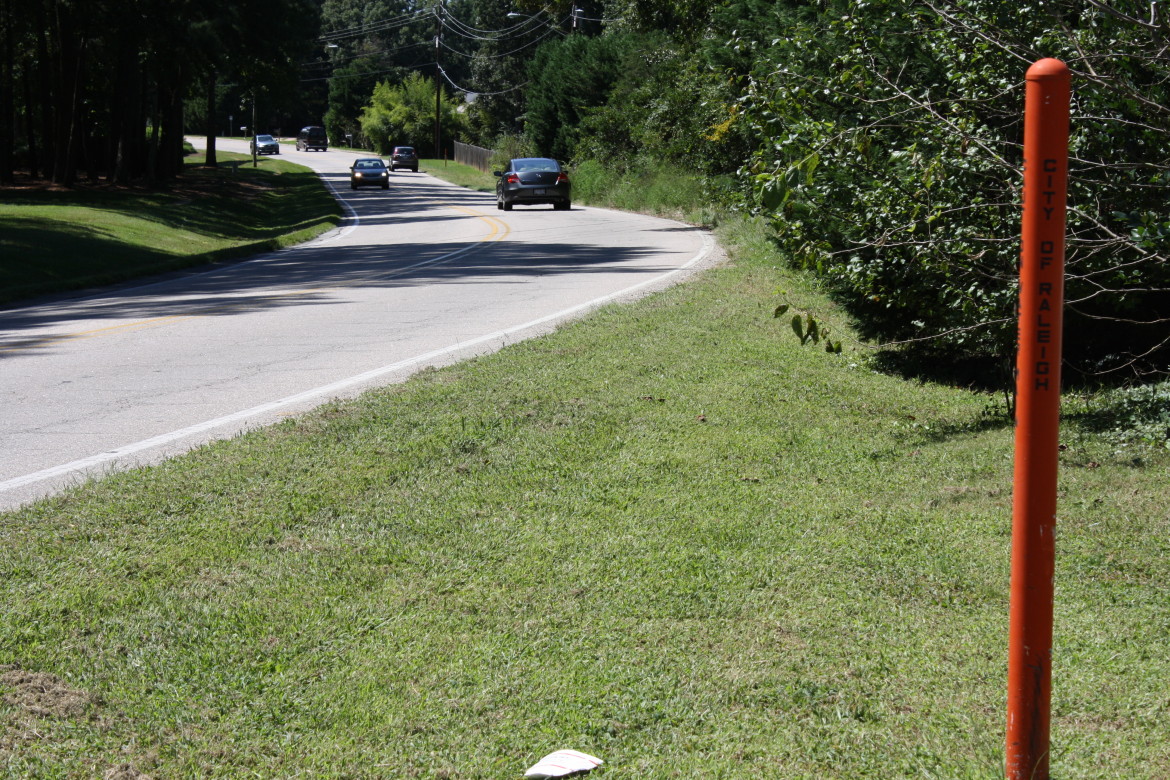Think of an LEED certification for roads.
That’s the simple explanation for a pilot program call Greenroads, soon getting a tryout in Raleigh.
City Councilors Tuesday discussed the possibility of using the Sandy Forks Road repair and rehabilitation project as a pilot project for Greenroads, which gives credits for sustainability best practices that relate to roadway design and construction.
The Greenroads program began in 2010, and is similar to the LEED certification process used for building projects.
With Greenroads, the credits are applied toward a total score for the project. Projects can achieve one of four certification levels depending on that score.
The Sandy Forks Road project will repair about a one-mile stretch of road between Six Forks and Falls of the Neuse roads. Plans include the installation of sidewalks and bicycle lanes, improved stormwater management devices, as well as landscaping and LED street lighting.

Ariella Monti
Sandy Forks Road.
It will cost the city $495 to register the project with Greenroads. The assessment process that is recommended for first-time projects will cost $1,000. The total cost of certifying a project with Greenroads is about $4,995.
Several Councilors, including Councilor Wayne Maiorano, questioned the effect this certification process would have on the timeline for the Sandy Forks Road project.
“The folks out in this area have been waiting a very long time to get this road upgraded,” Maiorano said. “Is there anything that we’re talking about today that’s going to delay that process from getting this road project finished?”
Councilor John Odom echoed his concern.
“Do you think you can get this done in this length of time?” he said.
Public Works Design and Construction Manager Chris Johnson said because the project is only 35 percent designed, he doesn’t anticipate the Greenroads certification causing any delay.
“If we run into any major hiccups along the way that would require major changes, then that’s where we need to make a key decision that maybe we won’t go in that direction,” Johnson said.
Applying for certification does not require a Council vote; the program was presented to Councilors for their information.
Councilor Russ Stephenson questioned the decision to use engineered stormwater control versus more natural methods of stormwater retention such as bioretention ponds or swales that are considered lower-impact development practices.
“I am just concerned that this program, if it’s designed to prefer engineered stormwater solutions, it may not be much of a Greenroads model for us to be following both in terms of environmental and in terms of cost,” Stephenson said. “I am not sure it goes as far as I’d like it to go.”
In a followup email to the Record, Johnson wrote that using shoulders or swales for stormwater retention requires a wider road than the curb and gutter approach, a type of engineered stormwater control. The city generally prefers to use the curb-and-gutter option for retrofit projects because they have the least amount of impact on existing properties along the road.
The project design calls for three different bioretention ponds in addition to curb and gutter.
